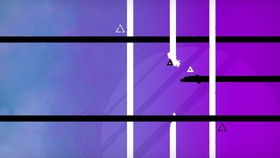As the sun sets over the tranquil waters, casting your line into the unknown brings a sense of excitement and adventure. For新手 (newcomers) to the world of fishing, the act of tying line can seem like a daunting task. However, with the right techniques and a bit of practice, you'll be able to master the art of tying line like a seasoned angler. Here's a comprehensive guide to help you get started on your fishing journey with confidence.
Understanding the Basics
Before diving into the nitty-gritty of line tying, it's essential to understand the different types of fishing lines available. The most common types are monofilament, fluorocarbon, and braided lines. Each has its unique properties and is suited for different fishing scenarios. Monofilament is versatile and floats well, fluorocarbon is nearly invisible underwater and is excellent for clear water conditions, while braided lines offer high strength and sensitivity.
Choosing the Right Knot
The most crucial aspect of tying line is selecting the right knot. The improved clinch knot is a go-to for many anglers due to its simplicity and reliability. Here's how to tie it:
- Make a Loop: Start by making a loop in your line with the tag end. This loop will be the end of your fishing line.
- Pass the Tag End Through the Loop: Take the tag end and pass it through the loop you just created.
- Make a Half Hitch: Make a half hitch with the tag end, passing it through the loop again.
- Tighten the Knot: Pull on both the standing part of the line and the tag end to tighten the knot. Make sure it's snug but not too tight.
- Secure the Knot: Once tight, trim the tag end close to the knot to prevent it from coming undone.
Additional Knots for Special Situations
While the improved clinch knot is a versatile choice, there are other knots you should be familiar with:
- The Palomar Knot: Ideal for connecting a fishing line to a lure or hook, it's known for its strength and simplicity.
- The Uni Knot: A strong and versatile knot that can be used for a variety of applications, including joining two lines together.
- The Blood Knot: Perfect for joining two lines of similar diameter, such as fishing line to leader material.
Preparation and Practice
Before you head out to the water, it's essential to practice tying your knots several times. This will help you become more comfortable and efficient. Here are some tips to help you prepare:

- Use the Right Tools: Keep a small spool of fishing line, a pair of scissors, and a knot-tying device (like a swivel) handy.
- Work on a Clean Surface: A flat, clean surface will help you see and manipulate the line more effectively.
- Take Your Time: Don't rush the process. Take your time to ensure each step is done correctly.
Common Mistakes to Avoid
When tying line, there are several common mistakes that can weaken your knots or lead to them coming undone. Here are a few to watch out for:
- Not Tightening the Knot Enough: A knot that's not tight enough will come undone under pressure.
- Trimming Too Close: Cutting the tag end too close can cause the knot to unravel.
- Using the Wrong Knot: Not all knots are suitable for every situation. Choose the right knot for the job.
Final Thoughts
Tying line is a fundamental skill that every angler should master. By understanding the basics, choosing the right knot, preparing adequately, and avoiding common mistakes, you'll be well on your way to becoming a confident and skilled angler. Remember, practice makes perfect, so don't be afraid to experiment with different knots and techniques. Happy fishing!












